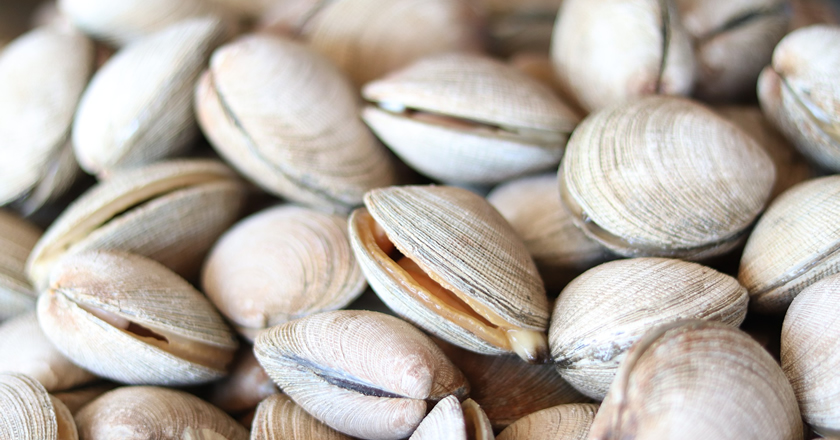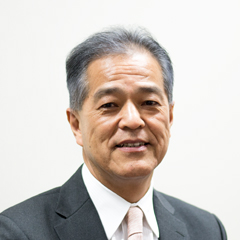Problem of asari clams mislabeled as produced in Kumamoto Prefecture
In January 2022, a TV station reported on the issue of falsification regarding the origin of asari clams labeled as produced in Kumamoto Prefecture, which led to a major problem, with the Ministry of Agriculture, Forestry and Fisheries moving to investigate.
As a result of examining their DNA, it was found that 97% of those asari clams labeled as a product from Kumamoto Prefecture were not actually produced in Kumamoto Prefecture.
For fishery products, it is a rule to indicate the name of the prefecture of the area where they are caught or the port where they are landed. In the case of imported products, the country of origin is indicated as the place of origin.
However, if farmed products have more than one place of origin, the place where they are farmed for the longest period is supposed to be indicated as the production area. It’s called the “rule of the place with the longest period.”
This time, it was reported that asari clams imported from China and other countries were released in the sea of Kumamoto Prefecture for a short period of time and the documents were falsified as if they had been farmed for a longer period than in China.
It is true that there was such a method, but it was about 20% of the total, and 80% took imported asari clams directly to the market and disguised their place of production.
In other words, most of them were disguised as being from a production area without even abusing the time-consuming “rule of the place with the longest period.”
Why do they lie to consumers in that way without hesitation? The main reason is that consumers won’t buy it if it honestly says it’s made in China.
In the first place, Japanese people are strongly oriented toward domestic products. This is not limited to asari clams, but for vegetables, the country of origin is mostly displayed honestly.
That’s because imported vegetables are cheaper than domestic ones. Consumers are choosing by weighing their domestic preferences against the low prices of imported products.
However, in the case of asari clams, domestic asari clams are overwhelmingly few anyway.
According to statistics from the Ministry of Agriculture, Forestry and Fisheries, the catch of domestic asari clams has fallen from about 160,000 tons in the 1980s to 4,305 tons currently. In fact, it is less than 3% of the peak. In other words, we are in the situation where the provision of asari clams is deeply dependent upon imports.
However, Japanese consumers have distrust and anxiety about Chinese food products. This is because pesticides and even poisonous substances were detected in foods made in China in the past. Also, herbicides were detected in asari clams from China.
Because of this, while the amount of domestic asari clams is extremely low and the demand cannot be met, asari clams made in China do not sell well. In that situation, the traders are tempted to disguise their origin.
Not only consumers but also the true producer is a victim
As a matter of fact, the problem of falsifying the origin of asari clams is nothing new, and in the past, the Ministry of Agriculture, Forestry and Fisheries and the Consumer Affairs Agency have often provided guidance on correcting it based on the Food Labeling Law. Then, the traders corrected the disguise honestly, but after a while, they started doing it again. This has been repeated.
In reality, the application of the law by national organizations is carried out in the three stages of guidance, order and penalty. However, there are few cases meeting with penalties of imprisonment or fines. I think it’s because they don’t want to destroy the fisheries industry that supports the local economy.
It may also be because the quality of Chinese products has improved and safety problems decreased. Also, even if you are a market professional, you can’t tell the difference between Chinese and domestic asari clams.
So, by disguising the origin of the asari clams, consumers can anyway buy rare asari clams that would not be available if they were really made in Japan, and the situation might appear as if everyone should be satisfied.
If this were so, would there be no problem? Well, of course there would. It is not good to lie about the place of production even if it is convenient for consumers.
This time, not only consumers but also asari clam manufacturers in Kumamoto Prefecture may be victims.
When this problem was reported, I think many people thought that they were asari clam dealers in Kumamoto Prefecture who pretended those products were from Kumamoto Prefecture.
However, the traders that import asari clams are not limited to those in Kumamoto Prefecture. It seems that there are many cases of traders in other prefectures deceiving consumers by using the name of Kumamoto Prefecture, which has been known as the production area of asari clams for a long time.
If that is the case, it will be intolerable for manufacturers in Kumamoto Prefecture who are trying hard to keep the tradition of asari clams.
Furthermore, this damage is not limited to asari clam manufacturers in Kumamoto Prefecture; it will eventually affect consumers in general.
Fraudulent claims of origin hinder the development of brand products
Japan’s agriculture and fisheries industries now face the challenge of having no young successors. That’s because the future of Japan’s agriculture and fisheries industries is uncertain and insecure.
Therefore, various measures are being taken, but fundamentally, I think it is important to show that agriculture and fisheries are interesting jobs with good incomes and future prospects. One of the efforts to achieve this is the cultivation of local brand products.
In Japan today, there are two ways to protect local brands: regional collective trademarks and geographical indications.
Regional collective trademarks mean the recognition of trademark rights. For example, a car manufacturer will register the name of its car as a trademark. Then, other manufacturers cannot use that name.
However, it is not possible to use place names for such trademarks. The thought is that place names are public goods and should not become trademark rights of private individuals.
In reality, however, agricultural products are rarely called by their original name, and most of them are recognized by the place names of their production area. For example, Yubari melons or Shimonita green onions. As for fishery products, Oma’s tuna and Rishiri kelp are famous.
Therefore, it was made possible for the local producers’ association, not just one producer, to take the name of the place as a trademark. So far, about 800 place names, including more than 50 place names as far as fishery products are concerned, have been registered as regional collective trademarks.
Geographical indications, on the other hand, are not only products of the region, but are also subject to certain standards for production methods, quality, and characteristics. If these standards are not met, the GI mark, which is a proof of geographical indication, cannot be displayed.
For example, melons in Yubari that do not reach the standard sugar content are not considered Yubari melons with the GI mark.
In other words, the quality of the product is guaranteed by the Minister of Agriculture, Forestry and Fisheries who certifies the geographical indication. This gives consumers peace of mind and reliability in the quality when buying products with the GI mark.
These branded products with premium value can be sold at a higher price than products from other regions or even imported products in general. Even so, consumers are ready to buy them.
Then, if the work of cultivating brand products that contribute to the revitalization of local communities and the economy becomes worthwhile, and if the income improves and the future prospects are well perceived, I think more of the young generations will naturally enter the agriculture and fisheries industries.
In addition, taking a regional collective trademark or receiving a geographical indication is also a way to prevent falsification of the place of origin.
In other words, you can sue a product that disguises its place of origin for trademark infringement, and if you put a GI mark on it against the rules, the government will act.
Conversely, the recent incident of falsifying the production area of asari clams as Kumamoto Prefecture will hinder those who are working hard to produce asari clams locally so that they can grow into brand-name products.
As a result, if consumers become distrustful of the asari clams produced in Kumamoto Prefecture, brand-name products will not only fail to grow, but also the production of the asari clams in Kumamoto Prefecture, which has already drastically decreased, might be reduced to zero.
If that continues, the domestic production of asari clams may disappear. It will cause huge damage to consumers too.
Local brand products are not only grown by producers, but also by the power of consumers.
It is important for consumers to declare that they will not tolerate incidents such as fraudulent claims of place of origin.
Also, please pay attention to the situation of domestic agricultural and fishery production sites. Then you will understand that domestic products are more expensive than imported products.
This will lead to maintaining domestic production of crops and nurturing local brands in Japan.
Of course, as a consumer, you might think that lower prices are better than higher prices.
However, for example, on a special day, tasting higher-priced brand-name products could bring comfort and richness to our lives.
Brand products have more stories and romance in addition to quality. It’s a value you can’t find in any other item. I think Japanese products are full of those possibilities.
I believe that this is an attractive as well as promising aspect of Japanese products, which not only enrich the lives of consumers but also expand sales channels overseas.
* The information contained herein is current as of March 2022.
* The contents of articles on Meiji.net are based on the personal ideas and opinions of the author and do not indicate the official opinion of Meiji University.
* I work to achieve SDGs related to the educational and research themes that I am currently engaged in.
Information noted in the articles and videos, such as positions and affiliations, are current at the time of production.


